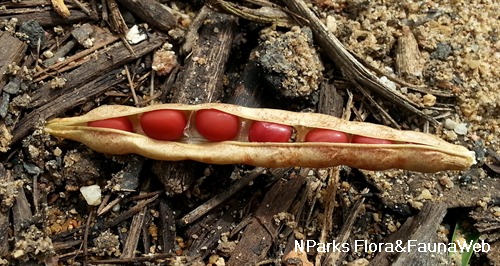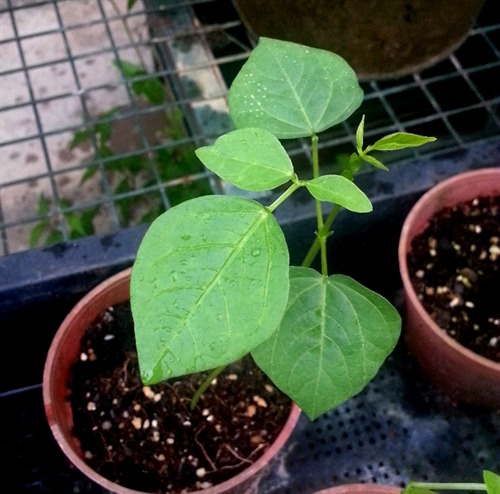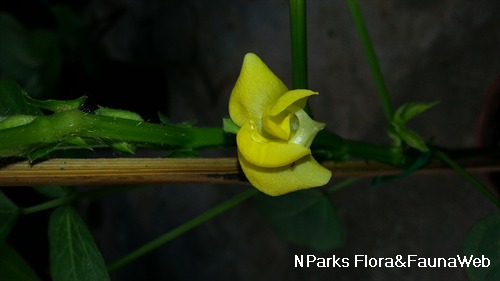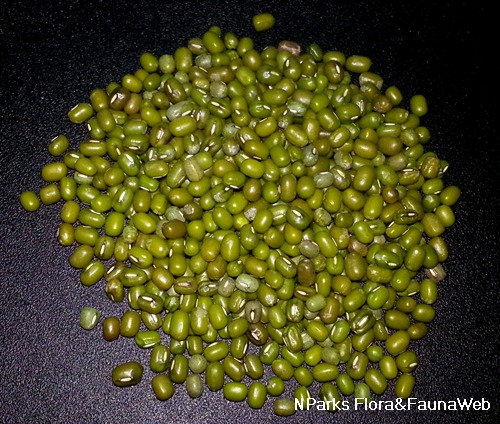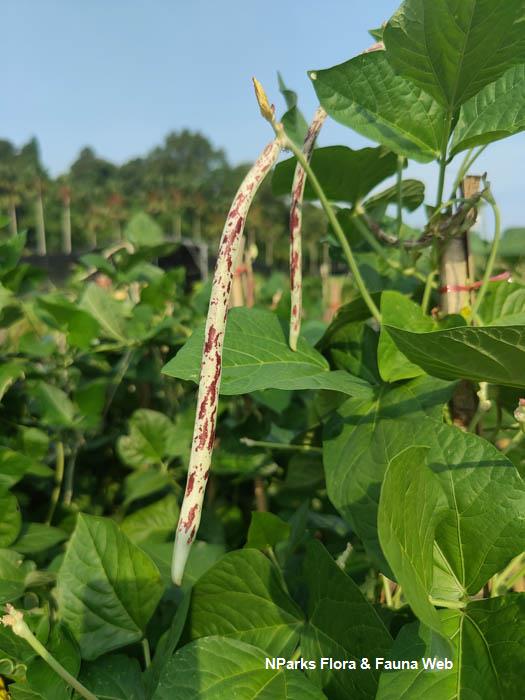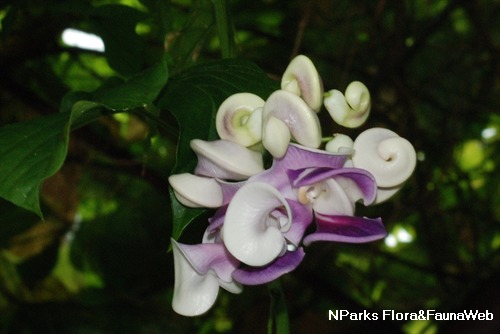
Back
Vigna angularis (Willd.) Ohwi & H.Ohashi
| Family Name: | Fabaceae (Leguminosae) |
| Synonyms: | Phaseolus angularis (Willd.) W.F. Wight |
| Common Name: | Adzuki Bean, Red Bean, 红豆, 赤豆 |
Name
Classifications and Characteristics
| Plant Division | Angiosperms (Flowering Seed Plants) (Dicotyledon) |
|---|---|
| Plant Growth Form | Climber |
| Lifespan (in Singapore) | Annual |
| Mode of Nutrition | Autotrophic |
| Chromosome Number | 22 |
Biogeography
| Native Distribution | Asia |
|---|---|
| Native Habitat | Terrestrial |
| Local Conservation Status | Non-native (Horticultural / Cultivated Only) |
Description and Ethnobotany
| Growth Form | An annual vine, it has an erect to twining growth habit and is usually bushy. The plant grown up to 25 to 90cm tall when erect. |
|---|---|
| Foliage | The leaves are trifoliate with ovate to ovate-rhomboid leaflets and are alternately arranged along the stem. |
| Flowers | The flowers are bright yellow and are borne on axillary racemes in 6 to 12 flowers. The flowers are pea-shaped (papilionaceous). |
| Fruit | The fruit is a pendulous pod or legume which is slightly constricted between the seeds. The small, oblong seeds are smooth and dull red in colour with a white, umimpressed hilum and rounded ends. The seeds can be kept for 2 years and still be viable. |
| Cultivation | It can be grown in a wide range of soils, in pH of 5.0 to 7.5 and in temperatures of 15 to 30°C under full sun. |
| Ethnobotanical Uses | Edible Plant Parts : Edible Seeds Food (Fruit or Vegetable): The dried seeds are cooked and used to make confections such as soup or are made into mooncake paste which is eaten during the Chinese Mid-Autumn Festival. The seeds are also ground into flour which is used in cakes, confections, shampoo and facial products. The immature sprouted seeds are also eaten as a vegetable. Medicinal: In China, the seeds are used to treat several diseases such as kidney trouble, constipation, abscesses and threatened miscarriage. The leaves are also said to alleviate fever while the sprouts are used to avert threatened abortion caused by injury. |
Landscaping Features
| Landscape Uses | General, Container Planting |
|---|---|
| Thematic Landscaping | Economic Garden |
Plant Care and Propagation
| Light Preference | Full Sun |
|---|---|
| Water Preference | Moderate Water |
| Rootzone Tolerance | Moist Soils, Well-Drained Soils |
| Propagation Method | Seed |
Foliar
| Foliage Retention | Evergreen |
|---|---|
| Mature Foliage Colour(s) | Green |
| Mature Foliage Texture(s) | Smooth, Hairy / Hirsute |
| Foliar Type | Compound (Trifoliate) |
| Foliar Arrangement Along Stem | Alternate |
| Foliar Attachment to Stem | Petiolate |
| Foliar Margin | Pinnately Lobed / Pinnatifid |
Floral (Angiosperm)
| Flower & Plant Sexuality | Bisexual Flowers |
| Flower Colour(s) | Yellow / Golden |
|---|---|
| Flower Grouping | Cluster / Inflorescence |
| Flower Location | Axillary, Terminal |
| Inflorescence Type | Raceme |
Fruit, Seed and Spore
| Mature Fruit Colour(s) | Brown |
|---|---|
| Fruit Type | Dehiscent Dry Fruit , Legume / Pod |
| Mature Seed Colour(s) | Red |
| Seed Quantity Per Fruit | Several (11-20) |
Image Repository
Others
| Master ID | 31454 |
|---|---|
| Species ID | 5851 |
| Flora Disclaimer | The information in this website has been compiled from reliable sources, such as reference works on medicinal plants. It is not a substitute for medical advice or treatment and NParks does not purport to provide any medical advice. Readers should always consult his/her physician before using or consuming a plant for medicinal purposes. |

